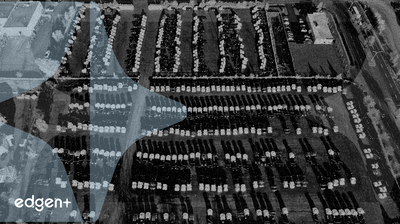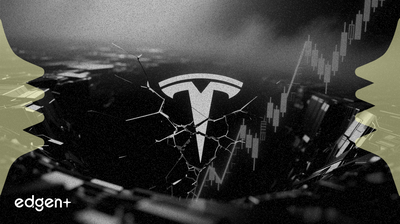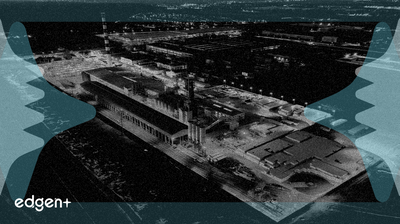 Report
Report
No Data Yet

## Executive Summary Chinese electric vehicle manufacturer **XPENG** announced a 19% year-over-year increase in Smart EV deliveries for November 2025, a figure that stands in stark contrast to weakening demand signals for competitors, including **Tesla**, in key Western markets. While **XPENG** demonstrated robust growth in both domestic and overseas shipments, the broader EV landscape is fracturing, with North American sales contracting 1% year-to-date while the global market expanded 21%, led by China. ## The Event in Detail **XPENG** reported total deliveries of 36,728 Smart EVs in November, bringing its cumulative deliveries for the first eleven months of 2025 to 391,937 units—a 156% increase year-over-year. The company's overseas deliveries have also been a key growth driver, reaching 39,773 units year-to-date, a 95% YoY increase. This performance diverges sharply from recent data in Western markets. In the United States, **Tesla**’s November sales fell approximately 23% year-over-year to around 39,800 vehicles, its lowest monthly total since January 2022. This occurred within a broader U.S. EV market that contracted by over 41% following the expiration of the $7,500 federal tax credit. Similarly, **Tesla** experienced steep registration declines in Europe, including drops of 58% in France and 59% in Sweden for November. ## Market Implications The data points to a significant geographical divergence in the EV sector. While global EV sales are up 21% year-to-date, driven by an 11.6 million unit market in China, sales in North America have declined by 1%. The end of government incentives appears to be a primary catalyst for the downturn in the U.S. In response to softening demand, **Tesla** has initiated aggressive incentive programs, including 0% APR financing for up to 72 months on certain models and no-down-payment lease options. While these promotions may help clear inventory, they signal growing price sensitivity and raise concerns among investors about potential pressure on profit margins. ## Expert Commentary The diverging market conditions are reflected in analyst sentiment. **Morgan Stanley** recently downgraded **Tesla (TSLA)** stock to "Equal Weight" with a $425 price target, arguing that the company's high valuation already prices in significant success from its AI and robotics ventures, which are increasingly cited as the primary justification for its stock price over its core auto business. According to a report from the bank, Wall Street is valuing **Tesla** as a portfolio of ventures—including its Full Self-Driving (FSD) network and **Optimus** robotics program—rather than as a traditional automaker. This forward-looking narrative is currently counteracting the negative sentiment from weakening EV delivery data. However, the consensus among analysts remains divided, with a wide range of price targets reflecting deep uncertainty about the company's ability to execute on its high-risk, high-reward projects. ## Broader Context The current market dynamics highlight a potential strategic crossroads for the EV industry. While **Tesla** faces immediate demand challenges in the U.S. and Europe, its stock performance remains heavily tied to its long-term AI and autonomy narrative. This contrasts with Chinese automakers like **XPENG** and **BYD**, which are capitalizing on the strength and resilience of their domestic market. This trend suggests that market leadership could be contested if demand in Western markets remains subdued. The ability of Chinese EV makers to sustain growth momentum while Western markets navigate policy-driven demand shocks and competitive pressures will be a critical factor in shaping the global automotive landscape over the next few years.

## Executive Summary While global electric vehicle (EV) sales have grown 21% year-over-year, the market is fracturing. A 1% contraction in North American sales, influenced by the cessation of key tax credits, contrasts sharply with continued growth in Europe and China. Against this backdrop, **BYD** has initiated a significant export push, setting records in October and fundamentally altering the competitive dynamics for its rivals. This strategy has enabled Chinese automakers to overtake South Korean competitors in Western European sales for the first time, placing substantial pressure on domestic Chinese firms like **Nio** and **Xpeng** and established European marques such as **Porsche**. ## The Event in Detail Data from Benchmark Mineral Intelligence confirms divergent market trends, with 11.6 million EVs sold in China and 3.8 million in Europe, compared to just 1.7 million in North America from January to November. The North American downturn is attributed to the expiration of the $7,500 EV tax credit and a relaxation of environmental regulations encouraging EV transition. In this environment, **BYD** has capitalized on its production scale. Despite facing intensified competition within China from startups like **Leapmotor** and **Zeekr**, **BYD** achieved record-high EV exports in October. This aggressive global expansion stands in contrast to the strategies of competitors like **Hyundai** and **Kia**, who have been criticized for not matching their strong EV development with high-volume production and marketing. ## Market Implications The most immediate impact is on **BYD's** direct competitors. **Nio** and **Xpeng** are struggling to match the scale and pace of **BYD's** international expansion. The pressure is also extending to established automakers. In a historic shift, Chinese automakers collectively outsold their South Korean counterparts in Western Europe in September, according to Nikkei Asia. Even premium brands are not immune. **Porsche** has scaled back its EV ambitions after global sales of its Taycan model fell 49% to just over 20,000 units, with a 40% drop in the U.S. The company cited pressure from high-end Chinese EVs in its key China market as a contributing factor. The market data suggests a strong consumer preference for SUV models, with **Porsche's** electric Macan significantly outselling the Taycan sedan. In the U.S., the market slowdown has led to workforce reductions at **General Motors (GM)** and **Rivian**, as automakers recalibrate their EV strategies in response to softening demand. ## Expert Commentary Despite regional slowdowns, the global outlook remains positive. Charles Lester, a data manager for Rho Motion, stated that, "Overall, EV demand remains resilient, supported by expanding model ranges and sustained policy incentives worldwide." This suggests that the challenges are concentrated in specific markets and segments rather than representing a global collapse in demand. Analysis from CleanTechnica highlights that the success of Chinese brands in Europe is not accidental but the result of a concerted strategy. The report notes, "Chinese EV companies have aggressively jacked up production volumes, cut costs, and increased sales," a playbook that has now allowed them to surpass South Korean sales in a key market. ## Broader Context The current market demonstrates a significant transfer of power in the global automotive industry. China's dominance as a manufacturing and consumer market is now translating into export strength that is reshaping competitive hierarchies worldwide. While North American automakers face a challenging domestic environment, compelling them to focus on differentiating technologies like **Rivian's** AI-driven autonomy stack, Chinese firms are leveraging an aggressive, volume-led approach to capture international market share. The fragmentation of the global EV market—with China leading, Europe as the primary battleground, and North America lagging—is a defining feature of the current landscape.

## Executive Summary **XPeng Inc.** (**XPEV**) shares declined 9.1% in a session marked by a significant disconnect between the company's technological advancements and market sentiment. Despite showcasing its next-generation autonomous driving platform and reporting a 19% year-over-year increase in vehicle deliveries, the stock faced downward pressure. The reaction mirrors a broader market trend where investors are scrutinizing the path to profitability for electric vehicle makers, weighing long-term AI potential against near-term financial performance. ## The Event in Detail At its 2025 AI Day, **XPeng** unveiled its VLA 2.0 autonomous driving platform and highlighted progress in its Robotaxi program, signaling a strategic push into higher-level automation. This news was coupled with strong operational data, as the company announced that Smart EV deliveries for November 2025 had increased by 19% compared to the previous year. However, these positive developments failed to buoy investor confidence, leading to a sharp 9.1% drop in **XPEV**'s stock price. ## Market Implications The market's bearish response to **XPeng**'s announcements suggests a sophisticated appraisal of the EV landscape, where operational growth and AI roadmaps are no longer sufficient to guarantee a positive stock reaction. This situation draws a direct parallel to **Tesla** (**TSLA**), whose valuation increasingly depends on a narrative of autonomy and AI to offset signals of softening vehicle demand in key markets like the U.S. and Europe. Investors appear to be questioning the immediate financial returns of long-term AI investments. In contrast, **Rivian** (**RIVN**) recently saw its stock surge over 15% after it not only announced its autonomous ambitions but also revealed its own proprietary "RAP1" AI chip built on **Arm**'s v9 architecture. **Rivian** also presented a clear monetization strategy with its "Autonomy+" subscription service. This suggests that the market is now rewarding tangible, vertically integrated technological assets and clear revenue models over purely forward-looking announcements. ## Expert Commentary The sentiment surrounding **XPeng** reflects concerns about its "profitability and funding needs." This view aligns with broader analyst skepticism in the automotive sector. For instance, **Morgan Stanley** recently downgraded **Tesla** to "Equal Weight," arguing that the value of its AI-driven businesses appears "priced in" and cautioning of a "choppy" trading environment. This perspective is critical, as it indicates that analysts are beginning to demand more than just a compelling story about future technology; they require a clear and credible path to financial execution. The general market mood is one of caution, with many analysts holding a "Hold" rating on auto-related stocks like **American Axle & Manufacturing** (**AXL**), underscoring sector-wide uncertainty. ## Broader Context **XPeng** is navigating a complex global EV market. While sales in China, its home market, grew 19%, the North American market is contracting, with a 1% decline in sales attributed to policy changes and the end of the $7,500 federal EV tax credit. This divergence highlights the regional pressures facing EV manufacturers. While **XPeng** is demonstrating technological progress on par with its competitors, the stock's performance indicates that investors are increasingly focused on the capital-intensive nature of scaling vehicle production and AI development. The central question for **XPeng**, and the industry at large, is how to fund the transition from promising AI demonstrations to profitable, at-scale autonomous systems in a market that is becoming more risk-averse.

## The Event in Detail: Tax-Gain Harvesting for 2025 As the end of the 2025 tax year approaches, a key financial planning opportunity known as "tax-gain harvesting" is in focus for investors. This strategy allows individuals to sell appreciated assets held for more than one year without incurring federal income tax, provided their taxable income falls within the 0% long-term capital gains bracket. For 2025, the income thresholds are set at $48,350 for single filers and $96,700 for married couples filing jointly. Unlike tax-loss harvesting, the "wash sale" rule does not prevent investors from immediately repurchasing the same security after selling it for a gain. This allows an investor to "refresh" their cost basis to the new, higher price, which reduces the capital gain that would be subject to tax on a future sale. However, financial planners caution that realizing gains, even at a 0% tax rate, increases a filer's adjusted gross income (AGI). This can have secondary consequences, such as triggering taxes on Social Security benefits, reducing eligibility for Affordable Care Act subsidies, or impacting college financial aid calculations. ## Market Implications: A Volatile Environment for Realizing Gains The decision to realize gains is complicated by the current market environment. On December 12, 2025, U.S. markets saw a significant pullback, with the **S&P 500** falling 1.1% and the tech-heavy **Nasdaq Composite** dropping 1.7%. The selloff was concentrated in the artificial intelligence sector, with the **PHLX Semiconductor Index** declining 5.10%. This volatility was accompanied by a rise in the **10-year Treasury yield** to approximately 4.19%. Higher yields increase the discount rate applied to future corporate earnings, which disproportionately pressures the valuations of high-growth technology stocks. This creates a challenging dynamic for investors, who must weigh the benefits of tax harvesting against the risk of selling into a declining market. ## Expert Commentary: Divergent Views on Economic Trajectory Recent commentary from Federal Reserve officials has added to market uncertainty. Following a 25-basis-point rate cut, several policymakers expressed caution. Kansas City Fed President **Jeffrey Schmid** stated that inflation is "too hot," while Chicago Fed President **Austan Goolsbee** noted he dissented in favor of waiting for more economic data. This contrasts with market pricing that anticipates approximately 50 basis points of further cuts by the end of 2026. In the private markets, however, sentiment appears more optimistic. A 2026 outlook from **PitchBook** highlights that AI-driven innovation remains a powerful force, capturing 65% of total venture capital deal value in 2025. This suggests that while public markets are grappling with macroeconomic headwinds, long-term venture investment in foundational technologies continues unabated. ## Broader Context: Long-Term Strategies vs. Short-Term Speculation Amid the volatility, the principles of long-term, "buy-and-hold" investing remain a key theme. Analysis of established companies with strong cash flows provides a counterpoint to the recent turbulence. For instance, companies like **Verizon (VZ)** offer a dividend yield of 6.7%, while **PepsiCo (PEP)** has raised its dividend for 53 consecutive years, offering a forward yield of nearly 4%. This strategy focuses on durable cash flow generation over market cycles. This contrasts sharply with more speculative instruments like single-stock leveraged ETFs. According to **Morningstar**, these products carry an average annual fee of 1.07%—three times the industry average—and often fail to deliver their advertised returns over longer periods due to the mechanics of daily resetting and "volatility decay." These instruments are designed for short-term trading and carry significant risks, standing in stark opposition to traditional long-term portfolio construction.

## Executive Summary Perrone Robotics has filed patent infringement lawsuits against **Toyota Motor Corp.** and six other major automakers, alleging the unauthorized use of its core automated vehicle technologies. This legal action injects significant intellectual property uncertainty into the rapidly evolving autonomous driving sector. ## The Event in Detail In late November 2025, **Perrone Robotics**, a firm specializing in autonomous vehicle systems, initiated legal proceedings against a cohort of seven large automakers. The central claim is that the driver-assistance software deployed in the defendants' vehicles infringes upon Perrone's patents covering automated vehicle and robotics control systems. While **Toyota** is a key defendant, the widespread nature of the lawsuits suggests a broad challenge to the industry's current technology stack. ## Market Implications The lawsuits represent a material risk for the automakers involved. A legal outcome in favor of Perrone could result in substantial financial penalties, royalty payments, or forced redesigns of critical driver-assistance features. For investors, this litigation clouds the investment narrative for companies like **Toyota**, whose long-term strategy is heavily dependent on leadership in automated driving. The event forces a market-wide re-evaluation of IP risk, potentially chilling innovation or driving up costs as companies rush to secure their technology through licensing or acquisition. ## Expert Commentary While no experts have commented on this specific case, the legal environment for AI and technology is fraught with uncertainty. Legal scholars note the tension between federal and state-level regulation creates a complex compliance landscape. As one legal expert, Kevin P. Lee, noted in a recent Bloomberg Law analysis regarding AI regulation, corporate counsel often must navigate a "patchwork" of rules in a "liability vacuum." This sentiment applies directly to IP law, where patent litigation can retroactively define the boundaries of innovation and create unforeseen liabilities for technologies already in the market. ## Broader Context This legal battle unfolds as the automotive industry accelerates its transition to autonomous technology. Companies like **Google's Waymo** are expanding testing in major urban centers and lobbying for a clear regulatory path to full driverless operation. The Perrone lawsuits serve as a critical reminder that beyond regulatory hurdles, the path to automation is paved with potential IP landmines. The case draws parallels to the "smartphone wars" of the early 2010s, where patent litigation played a key role in shaping market dynamics. The outcome could establish important precedents for how software and AI patents are valued and defended in an industry undergoing a fundamental technological transformation. It underscores the need for robust IP strategies as automakers increasingly become technology companies.

## Executive Summary The observed 35.1 mpg fuel efficiency of the **Toyota Grand Highlander Nightshade Hybrid** is not an isolated achievement but a direct result of **Toyota's** deeply entrenched corporate strategy. This philosophy, which prioritizes long-term reliability and incremental technological refinement, has enabled the company to consistently dominate industry benchmarks. Data from **Consumer Reports** confirms this success, placing **Toyota** and its luxury counterpart, **Lexus**, at the apex of vehicle reliability, while competitors like **General Motors (GM)** falter after implementing aggressive and risk-prone redesigns. ## The Event in Detail The core data point is the **Grand Highlander Hybrid's** demonstrated fuel economy of 35.1 miles per gallon. This figure exemplifies the maturity and effectiveness of **Toyota's** hybrid powertrain, a technology the company has been refining for decades. According to analysis from **Consumer Reports**, such hybrid systems offer more than just efficiency. Compared to their standard gasoline counterparts, they often provide superior acceleration and a smoother driving experience, turning a practical choice into a more desirable one. The **RAV4 Hybrid**, for instance, was noted for adding 20 horsepower and improving acceleration over the standard four-cylinder engine. ## Market Implications **Toyota's** business strategy centers on iterative development, a stark contrast to the high-risk, high-reward approach of complete model overhauls. This conservative methodology minimizes the introduction of new, unproven components that can lead to reliability issues. The recent case of the **Chevrolet Traverse** serves as a powerful case study. Following a comprehensive redesign for the 2024 model year, the vehicle lost its coveted "Recommended" rating from **Consumer Reports**. The decision was driven by subscriber data revealing a cluster of problems with the transmission, in-car electronics, and body hardware. This divergence in strategy has significant financial and brand equity implications. While **GM** must now address reputational damage and potential warranty costs, **Toyota** reinforces its brand promise of quality and durability. This is reflected in expert commentary from the industry. > "Our data consistently shows over time that cars from those brands [Lexus and Toyota] are reliable when new, and they continue to be reliable as they age," stated Steven Elek, **Consumer Reports'** program leader of auto data analytics. A **General Motors** spokesperson responded to the findings by stating, "We are committed to delivering exceptional quality and customer satisfaction. Our cross-functional teams continue to advance quality across the entire ecosystem." ## Broader Context In a market characterized by high vehicle prices and rising interest rates, long-term reliability has become a primary driver of consumer purchasing decisions. **Toyota's** strategic focus is exceptionally well-aligned with this market sentiment. Furthermore, data indicates that conventional hybrid vehicles are currently outperforming both plug-in hybrids and fully electric vehicles (EVs) in terms of reliability. This positions **Toyota** advantageously as the automotive sector navigates the complex transition toward full electrification. The reliability landscape shows a clear divide. While **Toyota** and **Lexus** secure the top two spots in used-car reliability with scores of 73/100 and 77/100, **Tesla** sits at the bottom of the list with a score of 31/100, underscoring the challenges that even market-leading EV manufacturers face in achieving long-term dependability.

## The Event in Detail The **Schwab U.S. Large-Cap Value ETF (SCHV)**, a passively managed fund with over $13.9 billion in assets, exemplifies a broader shift in investor strategy toward foundational, low-cost investment vehicles. With an annual expense ratio of just 0.04%, the ETF provides diversified exposure to large-cap U.S. stocks that exhibit value characteristics. This approach aligns with the philosophy articulated by **Charles Schwab** CEO Rick Wurster, who recently emphasized a "bright line" between long-term investing and speculative gambling. This positions the firm squarely against competitors that have embraced higher-risk, trading-oriented products. ## Market Implications: Thematic and Single-Stock ETF Risks The move toward value-based products is underscored by the documented underperformance of narrative-driven thematic funds. A recent five-year analysis by DayTrading.com, covering a full hype-to-reset market cycle from 2019 to 2023, found that a portfolio of popular thematic ETFs—including **ARK Innovation (ARKK)** and **Global X Robotics & AI (BOTZ)**—returned +32%. In stark contrast, a simple investment in the **SPDR S&P 500 ETF (SPY)** grew by +80% over the same period. This underperformance is compounded by higher costs and structural risks. Single-stock ETFs, which have attracted over $44 billion in cumulative flows, come with an average annual fee of 1.07%. Furthermore, Morningstar data reveals that the total assets under management in these funds ($41.2 billion) are less than the total inflows, indicating that, in aggregate, investors have lost money. The **SEC** has previously issued warnings on these products, noting their unsuitability for long-term investors due to risks like volatility decay. ## Expert Commentary: The Case for Diversification Financial experts are increasingly cautioning against portfolio over-concentration. Nick Ruder, CIO of Kathmere Capital, noted that the "Magnificent 7" stocks now represent 35-40% of the S&P 500, creating a historically concentrated market. He advocates for building "resiliency" through diversification. > "The discounts on value stocks are pretty significant relative to history," Ruder stated, highlighting an opportunity for mean reversion. "It's axiomatic value is cheaper than the market, but sometimes it's even more than normal, and we are at one of those times." Strategies to achieve this diversification include adopting equal-weight S&P 500 ETFs like the **Goldman Sachs Equal Weight U.S. Large Cap Equity ETF (GSEW)** or dedicated value funds such as the **Vanguard Value ETF (VTV)**. Further supporting this view, non-U.S. value stocks have demonstrated strong performance, with the **iShares MSCI Intl Value Factor ETF (IVLU)** gaining nearly 44% year-to-date. ## Broader Context: A Shift Toward Resilient Portfolios The divergence in performance and investor interest between low-cost value ETFs and high-fee thematic products signals a maturing market sentiment. As the initial hype around disruptive themes fades, investors are redirecting capital toward strategies grounded in financial fundamentals and risk management. The data suggests a flight to quality, where portfolio resilience, diversification, and cost efficiency are prioritized over speculative, narrative-driven bets. This trend reflects a broader re-evaluation of risk in response to heightened market volatility and unprecedented concentration in major indices.

## The Event in Detail **Charles Schwab Corporation (SCHW)** is actively reinforcing its traditional, long-term investment philosophy, a move substantiated by recent commentary from its leadership and supporting market analysis. CEO Rick Wurster has publicly drawn a “bright line” between investing and gambling, stating the brokerage will not follow competitors like **Robinhood** into offering high-risk products such as prediction markets. This strategic positioning was further contextualized when **Zacks Investment Research** identified Schwab as a "strong value stock," utilizing its proprietary Zacks Style Scores system which assesses stocks based on specific investing traits. Wurster, who took the helm in January, is betting that younger investors will ultimately gravitate toward Schwab’s comprehensive banking and long-term investment services. This approach prioritizes sustainable wealth creation over the high-octane, short-term speculation that has been increasingly prevalent in the market. ## Market Implications Schwab’s deliberate strategy places it in direct opposition to a significant market trend: the rise of complex, speculative financial instruments. The most prominent examples are single-stock exchange-traded funds (ETFs), which have seen explosive growth. According to **Morningstar**, 276 new single-stock ETFs were launched in 2025 alone. These products are designed to amplify short-term bets on individual companies like **Nvidia (NVDA)**, **Tesla (TSLA)**, and **Apple (AAPL)** using derivatives and swaps. They include leveraged ETFs that promise multiples of a stock’s daily return, inverse ETFs that bet on a stock’s decline, and covered call strategies. However, these instruments come with substantial risks, including high average annual fees of 1.07%—three times the cost of an average U.S. fund—and the effect of "volatility decay," which can erode returns over time, particularly in volatile markets. ## Expert Commentary The risks associated with these speculative products are well-documented. In 2022, the **U.S. Securities and Exchange Commission (SEC)** issued a warning about single-stock ETFs, with Commissioner Caroline Crenshaw noting that over longer periods, investors' returns may be "significantly lower than they would expect." Data from **Morningstar** supports this caution. The single-stock ETF market has attracted approximately $44 billion in cumulative inflows, yet its total assets under management stand at only $41.2 billion as of November 30. According to Morningstar research analyst Zachary Evens, this discrepancy suggests that, in aggregate, the performance of these funds has been negative for many investors. Evens has stated that these instruments are "not intended to be held for long periods of time" and are best viewed as short-term trading tools. ## Broader Context Schwab's positioning reflects a fundamental divergence in the retail brokerage industry. While some firms are embracing products that cater to speculative, high-frequency trading, Schwab is doubling down on its identity as a manager of long-term wealth. This strategy forgoes potential revenue from high-turnover trading in favor of building stable, long-duration client relationships. By choosing not to compete in the "fast lane," as CEO Rick Wurster termed it, Schwab is making a calculated decision that a conservative, value-driven approach remains the most viable path to sustained growth. The firm is betting that the allure of speculative gains will eventually give way to the more traditional goals of financial planning and retirement investing, positioning itself as the natural home for investors as their financial priorities mature.

## Executive Summary Rivian Automotive, Inc. (**RIVN**) stock climbed approximately 17% to $19 per share on December 12, 2025, after the company detailed its strategic pivot toward vertical integration and recurring revenue at its Autonomy & AI Day. The announcement of a proprietary AI processor and a new subscription service, **Autonomy+**, shifted the investment narrative to focus on Rivian as an "AI-defined" vehicle company. This rally gained further momentum from semiconductor giant **Broadcom's** (**AVGO**) blockbuster quarterly results, which provided strong evidence of an accelerating AI investment cycle. Despite the positive market reaction, Wall Street remains polarized, with analysts split on whether the company's long-term AI ambitions can outweigh near-term execution risks and macroeconomic headwinds in the electric vehicle market. ## The Event in Detail: Rivian's Strategic Pivot At its inaugural Autonomy & AI Day, Rivian outlined a clear strategy to control its technology stack and generate high-margin software revenue. The centerpiece was the **Rivian Autonomy Processor (RAP1)**, a custom 5nm chip to be manufactured by **TSMC**, which will power its next-generation **Autonomy Compute Module 3 (ACM3)**. This move represents a significant vertical integration effort, designed to optimize performance and cost, drawing comparisons to **Tesla's** in-house hardware strategy. To monetize this technology, Rivian introduced **Autonomy+**, a driver-assistance subscription service launching in early 2026. The financial mechanics are straightforward: customers can opt for a **$2,500 one-time purchase** or a **$49.99 monthly fee**. This model is critical to Rivian's goal of complementing vehicle manufacturing margins with a predictable, high-margin, recurring revenue stream. The company also confirmed it will integrate **LiDAR** into its upcoming **R2** models, expected by the end of 2026, to enhance sensor redundancy. ## Market Implications: Broadcom Validates the AI Thesis Rivian’s announcements landed in a market primed for AI narratives, a sentiment strongly validated by **Broadcom's** fiscal fourth-quarter earnings. Broadcom reported record revenue of $18.02 billion, a 28% year-over-year increase, driven by a 74% surge in AI-based revenue. CEO Hock Tan confirmed that the AI startup **Anthropic** placed an initial $10 billion chip order, followed by an additional $11 billion order, underscoring the massive capital flowing into AI infrastructure. Broadcom also reported a total AI-related backlog of $73 billion. These data points provide concrete evidence that demand for AI hardware is not only robust but accelerating into 2026. This broader market context lends significant credibility to Rivian's strategic pivot, suggesting that its investment in custom silicon and AI-driven features aligns with a durable, well-funded technological trend. The market is rewarding companies that are perceived as beneficiaries of the AI boom, a category that Rivian is now more firmly a part of. ## Expert Commentary: A Divided Wall Street The market's enthusiasm for Rivian's AI strategy is not universally shared among financial analysts, leading to a stark division. > The bullish case, articulated by **Needham**, is that Rivian is correctly positioning itself for a future dominated by "software- (and now AI-) defined vehicles." The firm raised its price target on RIVN to **$23** from $14 and reiterated a "Buy" rating, expressing confidence in the long-term strategy. > In contrast, the cautious view from **Morgan Stanley** highlights significant near-term hurdles. The bank recently downgraded Rivian to "Underweight" with a **$12** price target, citing the expiration of the U.S. federal EV tax credit after September 30, 2025, as a major headwind for EV demand. Their analysis prioritizes the execution risks associated with launching the mass-market R2 platform in a more challenging economic environment. ## Broader Context and Risks While Rivian's AI-centric narrative has captured investor interest, the company faces substantial operational and market-specific risks. The monetization of its autonomy roadmap, including the **Autonomy+** subscription, is not immediate, with key hardware and software features slated for 2026 and beyond. This long-dated payoff must be weighed against more immediate pressures, including cash burn, scaling production, and managing recalls. The end of the federal EV tax credit is a significant external variable that is expected to soften demand across the EV sector in 2026. For a company like Rivian that is not yet consistently profitable, this policy shift adds considerable pressure. The current investor dilemma is whether to price **RIVN** based on its potential as a long-term AI and software platform, as validated by sector-wide trends, or on the more immediate financial and operational challenges of scaling a vehicle manufacturing business in a cooling market.

## Executive Summary In November 2025, **Tesla (TSLA)** shareholders approved a colossal pay package for CEO **Elon Musk**, reported to be valued at nearly $1 trillion, contingent on meeting aggressive market capitalization and production milestones. This endorsement of Musk's leadership occurs even as his external activities present measurable financial risks to the company. Analysis of his political involvement in 2025, specifically with the Department of Government Efficiency (DOGE), reveals a direct negative impact on **Tesla's** sales and brand perception, underscoring the significant "key person risk" investors have underwritten. ## The Event in Detail The core event is the shareholder approval of a performance-based compensation plan for **Elon Musk**. This plan, first proposed in 2025, is structured to reward Musk only if **Tesla** achieves a series of demanding targets related to its stock market valuation and operational output. The approval follows a five-year period where Musk's personal net worth increased by over $300 billion, demonstrating his capacity for wealth generation tied to the company's performance. However, this wealth is notably volatile. In a parallel event in 2025, **Oracle (ORCL)** co-founder Larry Ellison saw his net worth fall by $25 billion in a single day after a stock plunge. This was compared to an episode in April 2025 when **Elon Musk** himself lost $35 billion over three days, illustrating the immense financial swings characteristic of technology billionaires. ## Market Implications The approval of the pay package suggests a continued, albeit high-risk, bet by shareholders on Musk's vision. The primary implication for investors is the formal linking of CEO compensation to shareholder value creation. However, this is juxtaposed with the significant downside risk from Musk's non-**Tesla** activities. In 2025, Musk's leadership of the Department of Government Efficiency (DOGE) provided a clear case study of this risk. His controversial actions, such as the dissolution of USAID, sparked widespread backlash. This directly translated into a slump in **Tesla** sales in the U.S. and Europe, as consumers and investors reacted negatively to his political role. An NBER study subsequently quantified the substantial economic damage inflicted on the **Tesla** brand, confirming that Musk's public persona can have a direct, adverse financial impact on the company. ## Expert Commentary The backlash to Musk's government activities in 2025 was severe. Microsoft founder **Bill Gates** publicly criticized the dismantling of USAID, characterizing it as "the world's richest man killing the world's poorest children." This highlights the intense public scrutiny and reputational damage that Musk's actions can attract, which in turn affects his corporate interests. More recently, Musk has expressed regret over his involvement with DOGE, stating in a December 9 podcast appearance that he should have focused on his companies instead. He admitted his government role was only "a little bit successful," acknowledging the negative consequences, including vandalism of **Tesla** vehicles and damage to the brand. ## Broader Context The situation with **Elon Musk** and **Tesla** serves as an extreme example of "key person risk" in the modern technology sector. While his leadership is undeniably a primary driver of **Tesla's** innovation and growth, his unpredictability and controversial public engagements create a unique and substantial risk profile. His recent legal and regulatory battles, including a $140 million fine levied against his social media platform X by the European Union for transparency violations, further compound these concerns. Shareholders have thus endorsed a high-stakes scenario: they have incentivized Musk with one of the largest pay packages in corporate history, betting that the value he creates by meeting performance targets will outweigh the documented financial and reputational damage his external behavior can inflict upon the **Tesla** brand.

## Executive Summary **Tesla** is deploying aggressive year-end incentives, including 0% financing and free upgrades for the **Model Y**, to stimulate demand amid a significant sales downturn in the United States. Data reveals a 23% year-over-year drop in November U.S. sales, prompting a strategic pivot to prioritize sales volume, which analysts expect will compress the company's profit margins. This move comes as the broader electric vehicle market faces headwinds, including the expiration of federal tax credits. Contradicting the negative sales data, recent industry reports have lauded Tesla for significant improvements in vehicle reliability, creating a complex narrative for the automaker as it closes the fourth quarter. ## The Event in Detail According to data from **Cox Automotive**, Tesla's U.S. sales in November fell to 39,800 units, a 23% decrease from the 51,513 units sold in November of the previous year and the company's lowest monthly total since January 2022. The decline follows the expiration of a $7,500 federal EV tax credit, which had previously spurred a sales surge in the third quarter. In response, **Tesla** has initiated a series of promotional offers to boost Q4 deliveries. These include 0% financing and aggressive lease deals on in-stock **Model Y** examples. This strategy is an attempt to clear existing inventory and counter the sales slump attributed to both the loss of tax incentives and increased competition. Earlier efforts to boost sales included launching lower-priced, decontented

## Executive Summary A recent filing with the Securities and Exchange Commission disclosed that **Kimbal Musk**, a director at **Tesla, Inc. (TSLA)**, executed a sale of company shares valued at approximately $25.6 million. The transaction, while significant in absolute terms, represents a minor fraction of Musk's total stake in the electric vehicle manufacturer. Market analysts generally interpret such sales as routine financial management for liquidity or diversification, rather than a bearish signal on the company’s outlook, especially given the size of the remaining holdings. ## The Event in Detail On December 9, 2025, **Kimbal Musk** sold 56,820 shares of **Tesla** common stock. The sale was conducted in multiple transactions at prices ranging from $450.44 to $450.90, with a weighted average price of $450.66 per share. The total proceeds from these transactions amounted to approximately $25.6 million. The details were made public through a Form 4 filing, which is mandatory for company insiders to report trades in their own company's stock. ## Market Implications The market impact of this insider sale has been neutral. **Tesla's** stock, trading at $446.89 following the event, showed minimal reaction. This is largely because the scale of the sale is insignificant relative to **Tesla's** massive $1.48 trillion market capitalization. A sale of this size is not sufficient to influence institutional sentiment or alter the stock's trajectory. Such transactions are common across the market, as seen with other executives at companies like **Cloudflare** and **Roivant Sciences**, who also recently sold shares, some under pre-arranged Rule 10b5-1 trading plans. ## Expert Commentary According to established market analysis principles, insider selling does not automatically indicate a negative outlook. Executives and directors often sell shares for a variety of personal financial reasons, including liquidity needs, tax planning, philanthropic contributions, or portfolio diversification. As stated in market reports: > Tracking insider transactions provides valuable insights for investors... While insider buying may suggest that those with the most knowledge of a company believe its stock is undervalued, insider selling doesn’t necessarily indicate negative sentiment as it can occur for various personal reasons. When transactions do not represent a significant portion of an insider's holdings, they are typically not viewed as a change in their confidence in the company. ## Broader Context Following the sale, **Kimbal Musk** retains a substantial position in **Tesla**, directly owning 1,376,373 shares. At current market prices, this stake is valued at approximately $615 million. The $25.6 million sale, therefore, accounts for less than 5% of his total holdings in the company. This context is critical for investors, as it reframes the event from a potentially alarming signal to a standard instance of personal asset management by a high-net-worth individual with a concentrated stock position. The sale is a minor adjustment to a much larger, long-term investment.

## Executive Summary A recent report projects the global electric mobility market will reach a valuation of $1.96 trillion by 2034, signaling a significant expansion beyond passenger cars. Growth is increasingly fueled by the commercial vehicle sector—including light commercial and heavy-duty trucks—and the rapidly expanding market for utility-scale battery storage. This diversification is reshaping industrial supply chains, particularly for essential materials like lithium, and intensifying global competition as established Western automakers contend with the aggressive international expansion of Chinese brands. ## The Event in Detail According to a December 12 market analysis, key growth opportunities within the electric mobility sector are concentrated in electric cars, hub drive systems, and lithium-ion batteries. The report identifies China as a critical market, with a particular focus on electric Light Commercial Vehicles (LCVs) and other commercial segments. This trend is substantiated by recent industry movements, including **Mercedes-Benz Trucks** initiating series production of its eActros 400, and both **Kenworth** and **Volvo Trucks** expanding their portfolios with new medium- and heavy-duty electric models scheduled for production in 2026. These developments underscore a strategic pivot toward electrifying logistics and distribution networks. ## Market Implications The diversification of the EV market carries significant consequences. A primary impact is the structural shift in the lithium market. After a three-year supply glut, analysts now project a surge in demand driven by energy storage systems (ESS). Analysts at **UBS** forecast that lithium demand from the ESS sector could rise 55% in 2026, compared to just 19% from EVs. This has led firms like **Citigroup**, **UBS**, and **Bernstein** to predict a potential lithium market deficit by 2026. Competition within the auto industry is also intensifying. State-controlled Chinese automaker **FAW**'s **Hongqi** brand, for instance, increased sales by 17.4% in 2024 and is targeting entry into 25 European markets by 2028 with 15 new electric and hybrid models. The company is reportedly leveraging state access to technology to undercut Western competitors on price, a strategy that could be complicated by potential EU tariffs on Chinese-made EVs, which can be as high as 45.3% for some state-owned entities. In response, **Hongqi** is exploring establishing production facilities in Europe. ## Expert Commentary Market sentiment on the lithium outlook is divided. Bullish comments have come from Chinese producers. **Jiang Anqi**, chair of **Tianqi Lithium Corp.**, anticipates a balanced market in 2026, citing energy storage as a key driver. Similarly, **Ganfeng Lithium Group Co.** vice president **He Jiayan** noted that the energy storage boom had "exceeded expectations." Analysts at **Bernstein** stated that 2025 "represents the bottom" for the lithium market, which they see "tightening through 2026 and 2027." However, some experts advise caution. **Martin Jackson**, head of battery materials at **CRU Group**, described some optimism as "dangerously inflated," pointing to a manufacturing rate of battery cells that is "immensely out of step" with installations. **Iola Hughes** of **Benchmark Mineral Intelligence** suggested that Beijing's closer supervision of its domestic battery industry could lead to "choppier and probably softer" lithium demand growth in 2026–27. Regarding the expansion of Chinese brands, experts note significant hurdles. **Tu Le**, founder of consultancy **Sino Auto Insights**, remarked on **Hongqi**'s challenge: > "Outside China, Hongqi loses that natural home-field advantage of being the national champion... They’ve got to figure out how to sell themselves to people who have no idea what Hongqi stands for." ## Broader Context The expansion of electric mobility is an integral part of a wider industrial and energy transformation. The growth in utility-scale battery storage is crucial for stabilizing power grids to support renewable energy sources and the increasing electricity demands of large data centers. Concurrently, the electrification of the commercial trucking fleet, as pursued by **Daimler Truck**, **Volvo**, and **Paccar**, points to a fundamental shift in global logistics aimed at reducing emissions and improving operational efficiency. This transformation also has a distinct geopolitical dimension. The aggressive overseas strategies of Chinese automakers are creating new friction in international trade, highlighted by the EU's tariff considerations and Mexico's recent imposition of a 50% tariff on Chinese-made vehicles. The global electric mobility market is thus becoming a key arena for both technological competition and strategic economic policy.

## Executive Summary A joint report by **Boston Consulting Group** and **duPont Registry Group** projects the U.S. luxury and exotic automotive market will expand from its current $110 billion valuation to as much as $215 billion by 2035. The growth is underpinned by a robust secondary market and evolving digital-first consumer behaviors, which demand significant strategic shifts from manufacturers, dealers, and marketplaces. This optimistic forecast for the high-end segment contrasts sharply with recent sales declines in the broader electric vehicle market. ## The Event in Detail The study forecasts a compound annual growth rate (CAGR) of 5% to 7% through 2035 for the total addressable market of vehicles priced at or above $100,000. A key driver of this expansion is the secondary market. Sales of used luxury and exotic vehicles are expected to grow 1.5 times faster than new vehicles, with annual growth projected at 5% to 8% compared to 5% to 6% for new cars. The report attributes this trend to high prices for new automobiles and an expanding inventory of pre-owned high-end vehicles. ## Expert Commentary Analysis derived from a survey of over 400 collectors and prospective buyers indicates a fundamental shift in purchasing habits. While brands like **Porsche** and **Ferrari** remain anchors, younger buyers from the Millennial and Gen Z demographics show a greater willingness to cross-shop and consider other brands. These younger consumers are also more likely to view a luxury vehicle as an investment opportunity. Across all age groups, a significant digital adoption is evident: > "The survey found a high degree of digital comfort among all generations, with three-quarters of respondents open to buying their next vehicle entirely online." Furthermore, about 80% of buyers browse for vehicles online at least weekly, even without immediate intent to purchase. This highlights a need for continuous digital engagement. Experiential marketing, such as track events and factory tours, was also cited as a valuable component of brand satisfaction. ## Market Implications The report concludes that traditional business models are insufficient to capture the evolving customer base. To maintain market position, industry players must prioritize several key actions. These include delivering consistent and engaging online content that meets buyers' digital sophistication, building emotional brand loyalty, advancing e-retail capabilities, and expanding experiential offerings. The pronounced growth in the used market suggests a significant opportunity for enhancing certified pre-owned programs and specialized digital marketplaces that cater to this segment. ## Broader Context The projected resilience and growth in the luxury auto sector diverge from trends in the wider automotive market, particularly for electric vehicles. According to data from **Cox Automotive**, U.S. sales for **Tesla** in November 2025 were down 23% from the previous year, potentially marking a four-year low. The overall U.S. new EV market saw sales fall 40% in the same month compared to November 2024. This bifurcation suggests that the high-end luxury market, driven by different consumer motivations such as investment and emotional connection, is currently decoupled from the economic and competitive pressures affecting the mass-premium EV sector.

## Executive Summary The U.S. electric vehicle market has entered a period of sharp contraction following the September 30 expiration of the federal EV tax credit. Data from November 2025 reveals a significant downturn in sales across the board, most notably for market leader **Tesla**. In response, foreign automakers are resorting to deep discounting to move inventory. This market reality stands in contrast to a bullish outlook for domestic manufacturers, which is predicated on a proposed new tax incentive designed to favor U.S.-assembled vehicles. ## The Event in Detail According to data from **Cox Automotive**, U.S. sales of new electric vehicles fell 40% in November 2025 compared to the previous year. **Tesla** reported a 23% year-over-year drop in its domestic sales, delivering approximately 39,800 units, its lowest monthly total since January 2022. This downturn is a direct consequence of the sales surge in the third quarter as consumers rushed to purchase vehicles before the federal tax credit expired. **Tesla's** attempt to mitigate the slump by introducing lower-priced, de-contented versions of its Model 3 and Model Y has proven insufficient. Furthermore, this strategy has reportedly led to the cannibalization of higher-margin models, placing significant pressure on the company's gross profits, which are projected to fall from a peak of $20 billion in 2022 to approximately $7 billion this year. ## Market Implications The market's high sensitivity to government subsidies is now clear. The absence of broad-based incentives has triggered immediate and aggressive strategic shifts among automakers. **Kia** dealers are offering discounts of up to $11,000 on EV6 models and as much as $17,000 in lease cash on the EV6 GT to stimulate demand. Similar declines were reported for other brands, with **Honda** and **Hyundai** also experiencing double-digit percentage drops in EV sales. The current environment puts companies like **Tesla** under considerable financial pressure, with the potential for a net loss in the fourth quarter. The focus now shifts to how automakers will navigate a market where consumer demand is tightly linked to affordability and government policy. ## Expert Commentary Despite the current market-wide slump, industry analysis highlights a positive future for domestic auto manufacturers. An analyst note states, "Affordable EVs and proposed tax incentives are expected to boost demand for domestic auto manufacturers." The proposed policy in question is a tax deduction of up to $10,000 on interest for vehicles assembled in the United States. This has specifically generated a bullish outlook for companies such as **General Motors (GM)**, **Polaris (PII)**, and **Blue Bird (BLBD)**, which are positioned to benefit directly from such a policy. ## Broader Context The situation reflects a potential pivot in U.S. industrial policy, moving from broad, technology-agnostic subsidies to more targeted, protectionist measures aimed at bolstering domestic manufacturing. This trend is occurring as the global EV landscape becomes more competitive. In Europe, **Citroën** is exploring the possibility of a sub-£15,000 electric car, contingent on the approval of a new 'E-car' category with eased regulatory standards. In the U.S., a consortium of eight automakers is working to develop a charging network to challenge **Tesla's** dominance, indicating a long-term strategic focus on building competitive infrastructure beyond immediate price adjustments.

## Executive Summary **Uber** and **WeRide** have initiated a public robotaxi service in Dubai, integrating it into the **Uber** application as part of a strategic partnership with the city’s Roads and Transport Authority (RTA). This launch represents a critical step in **Uber**'s asset-light global autonomous vehicle (AV) strategy, which focuses on platform-based integration rather than in-house vehicle development. While the service currently operates with a human safety specialist, a fully driverless commercial service is slated for early 2026. The move aligns with Dubai’s ambitious Self-Driving Transport Strategy, which aims for 25% of all transportation to be autonomous by 2030. ## The Event in Detail The service is now available for booking through the **Uber** app in the Umm Suqeim and Jumeirah areas of Dubai. The fleet, operated by local partner **Tawasul**, consists of Level 4 autonomous vehicles from **WeRide**, which maintains a fleet of nearly 150 AVs in the Middle East, over 100 of which are designated as robotaxis. This phased rollout, beginning with human-supervised operations, is a standard industry practice to ensure safety and gather operational data before transitioning to fully autonomous service. This launch follows a pilot program announced in April 2025 and is set against a backdrop of significant mobility growth in the region. According to the RTA, shared mobility trips in Dubai increased by 28% in 2024, totaling 153 million trips across public transport and ride-hailing services, indicating a strong underlying demand for such services. ## Market Implications **Uber**’s strategy in Dubai serves as a microcosm of its global approach: to become the dominant ride-hailing platform for a network of third-party AV operators. By partnering with over 20 AV technology firms—including **Waymo** in the U.S., **Baidu** for markets outside China, and **Avride** in Dallas—**Uber** avoids the immense capital expenditure that has strained competitors. High development costs have been cited as a factor for firms like **Ford** and **General Motors** scaling back their AV ambitions. The financial viability of robotaxis remains a key question for investors. **Alphabet**'s "Other Bets" division, which includes **Waymo**, reported a loss of $1.42 billion in the third quarter, and analysts estimate the cost of a single **Waymo** vehicle at approximately $150,000. Despite these figures, **Uber** is leveraging its existing market presence to test and scale AV operations in strategically aligned markets. The company noted that in U.S. cities with **Waymo** integration, such as Austin, market growth is outpacing other domestic markets, suggesting AVs can boost demand. ## Expert Commentary Industry leaders project a massive market for autonomous mobility, though opinions on the timeline to profitability vary. **Uber** CEO Dara Khosrowshahi has framed the sector as a "trillion-dollar-plus" opportunity, a sentiment echoed by **Nvidia** CEO Jensen Huang. Khosrowshahi stated his expectation to be in "10-plus markets by next year" and identified Asia as a major growth region. > "We are very confident we will have access to autonomous technologies in the large cities and markets that really count," Khosrowshahi told Bloomberg. "The technology is absolutely getting there. The robot driver doesn’t get tired, doesn’t get distracted." **WeRide**'s CFO, Jennifer Li, affirmed this long-term vision, stating the company is "expanding rapidly across the Middle East and globally, driven by our vision to deploy tens of thousands of robotaxis by 2030." ## Broader Context **Uber**'s platform-centric model contrasts with the vertically integrated approach of companies like **Tesla**. **Uber** has cultivated a diverse portfolio of strategic partnerships, including a $375 million investment and commercial commitment with **Avride** in Dallas and a tie-up with **Lucid** and **Nuro**. This strategy allows **Uber** to remain flexible and integrate the most advanced technology from various developers without being tied to a single AV hardware stack. The choice of Dubai is strategically significant. The UAE’s clear governmental support and regulatory framework for autonomous driving provide a favorable environment for deployment. This contrasts with markets where regulatory approval has been slower. Khosrowshahi has emphasized that cooperative regulators are critical for success, positioning regions like the Middle East and parts of Asia, including Japan and Hong Kong, as key targets for near-term expansion.

## The Event in Detail The U.S. stock market experienced a broad rally after the Federal Reserve announced a new interest rate cut and signaled a more dovish monetary policy stance heading into 2026. The move spurred significant gains in the S&P 500 and Dow Jones Industrial Average. Against this bullish backdrop, a noteworthy pattern of insider trading has emerged, with executives and major stakeholders increasing their holdings in several publicly traded companies. Key insider buying activities include a series of transactions at **Hycroft Mining Holding Corp (HYMC)**, where ten percent owner Eric Sprott acquired 480,000 shares for a total of $5.7 million. At **SurgePays, Inc. (SURG)**, Director David Allen May purchased 38,422 shares for approximately $61,646. These purchases are often interpreted by investors as a strong vote of confidence from individuals with intimate knowledge of the company's future prospects. Conversely, the market also recorded significant insider sales. **Tesla (TSLA)** director Kimbal Musk sold 56,820 shares for approximately $25.6 million, and **Cloudflare, Inc. (NET)** President Michelle Zatlyn sold 71,441 shares for a total of $15.9 million. While large sales can sometimes raise concerns, they are often motivated by personal financial planning and do not necessarily signal a negative outlook. ## Market Implications The recent surge in insider buying, particularly in growth-focused sectors like biotechnology and mining, suggests that company leaders perceive their stock as undervalued in the current market. This activity provides a bullish signal to institutional and retail investors, suggesting that those with the most information are betting on future appreciation. The Fed's accommodative stance reinforces this sentiment, as lower borrowing costs typically benefit growth companies. However, the market is not without its crosscurrents. The technology sector has shown signs of weakness, with concerns over an "AI bubble" contributing to selloffs in major names like **Nvidia (NVDA)**, **Oracle (ORCL)**, and **Broadcom (AVGO)**. This divergence indicates that investors are becoming more selective, favoring companies with strong fundamentals and clear insider confidence over broad, speculative bets on entire sectors. ## Expert Commentary Market analysts view the insider buying trend as a significant indicator. According to research from Investing.com, "Tracking insider transactions provides valuable insights for investors as these activities often signal insiders’ confidence in their companies’ future prospects." In the biotech sector, which has endured a multiyear bear market, analysts from William Blair expressed optimism for 2026. In a recent note, they stated their belief that "continued strong clinical data, commercial launches and M&A will keep the sector performing better." They added that as long as companies can launch drugs without significant government price regulations, "specialist investment in biotech can continue to have strong performance." This view aligns with the increased confidence suggested by insider buying in the broader growth category. ## Broader Context The current market environment is shaped by the Federal Reserve's pivot from fighting inflation to supporting a potentially cooling labor market. However, the decision to cut rates was not unanimous, with a divided vote highlighting underlying uncertainty about the economic path forward. This division could lead to increased market volatility as investors parse every piece of economic data for clues about the Fed's next move. Geopolitical factors also add to the complexity. The U.S. government's shifting policy on technology exports to China, particularly concerning high-end AI chips from firms like **Nvidia**, creates both opportunities and risks. Furthermore, with Fed Chair Jerome Powell's term nearing its end, potential leadership changes at the central bank could introduce a new era of monetary policy, making long-term predictions challenging. In this climate, insider activity serves as a valuable, company-specific signal amidst widespread macroeconomic ambiguity.

## The Event in Detail Amid persistent geopolitical friction and supply chain shocks, a fund manager has proposed a strategic reallocation of capital away from the technology-focused "Magnificent Seven" toward a new cohort of companies. This thesis posits that the next market leaders will be domestically-anchored businesses essential for national economic security. The identified sectors include utilities, basic materials, defense, and energy infrastructure—industries characterized by resilience and localization. This perspective suggests a fundamental re-evaluation of risk, where geographic and operational sovereignty become primary drivers of value. The argument is that decades of optimizing for cost via globalized supply chains have introduced unacceptable vulnerabilities, now being exposed by trade disputes and international conflict. Consequently, capital is expected to flow toward companies that control critical domestic assets and production capabilities, forming the bedrock of a more self-reliant industrial base. ## Market Implications The theoretical shift is already manifesting in corporate strategy and market performance. **Centrus Energy (NYSE: LEU)** exemplifies the trend, having initiated a multi-billion-dollar plan to expand its uranium enrichment capacity in Piketon, Ohio. This move directly addresses the need to restore domestic production of High-Assay, Low-Enriched Uranium (HALEU), a next-generation nuclear fuel critical for advanced reactors and national security. The project is expected to create over 1,000 jobs, signaling a significant private and public investment in U.S. energy independence. In contrast, the risks of failing to align with this new paradigm are stark. **Air Products & Chemicals (NYSE: APD)** saw its stock fall nearly 25% in 2025 after a strategic retreat from several large-scale clean energy and hydrogen projects. The company incurred a $2.3 billion after-tax charge, leading to a reported net loss of $1.7 billion in a single quarter. This reversal highlights the perils of capital-intensive global projects that are misaligned with the current macroeconomic and geopolitical environment, turning a perceived growth story into one of stagnation and strategic ambiguity. ## Expert Commentary Expert testimony before the House Select Committee on the CCP provides a data-driven basis for this strategic pivot. According to analysis from the Foundation for Defense of Democracies (FDD), China

## The Event in Detail On December 11, 2025, the U.S. House Select Committee on the CCP held a hearing to address what expert testimony described as China's "Trojan Horse" strategy in the global automotive sector. The hearing featured testimony from **Elaine K. Dezenski** of the Foundation for Defense of Democracies (FDD), who argued that China's rise is not a story of competitive success but of "non-market manipulations." The central thesis presented was that China's state-led industrial policy aims to establish dominance through a systemic, multi-pronged strategy that fundamentally breaks market logic, creating an existential threat to U.S. and other market-based auto industries. ## Deconstructing the Financial Mechanics China's strategy is built on a foundation of extensive financial and structural manipulation, designed to undercut global competitors. * **State-Funded Overproduction:** The Chinese government has spent approximately **$230 billion** on subsidies for electric vehicles (EVs) and batteries between 2009 and 2023. This financial backing allows state-supported firms to largely ignore profitability, with only two major Chinese EV makers, **BYD** and **Li Auto**, reportedly being profitable. The result is massive overproduction, with China on pace to manufacture up to 36 million EVs in 2025 against an anticipated global demand of only 20 million units. * **Critical Mineral Monopolies:** China has established near-monopolies over essential raw materials for the auto industry. It provides 95% of the world's battery-grade graphite, 85% of lithium anodes, and 70% of cathodes. This control allows it to weaponize supply chains, as seen when Chinese lithium producers reacted to the U.S. Inflation Reduction Act by reducing supply, driving prices from **$7,000 per metric ton** in 2021 to over **$75,000 per metric ton** by late 2022 before crashing prices to make non-Chinese projects economically unviable. * **Dumping and Price Manipulation:** With domestic demand unable to absorb its massive output, China dumps its surplus abroad at artificially low prices. This practice has made China the subject of more anti-dumping investigations than any other WTO member. A notable example of price manipulation involved Chinese entities withdrawing massive volumes of nickel from the London Metals Exchange (LME), damaging competitors like Finnish steel producer **Outokumpu**, which saw its earnings drop by nearly 50% due to high nickel prices. ## Market Implications The testimony warned that these practices threaten the entire North American automotive ecosystem. While direct imports of Chinese vehicles into the U.S. remain limited, Chinese auto parts are flooding the market through indirect channels. An estimated 30-40% of auto parts imported into Mexico from China later enter the United States, circumventing tariff barriers. Between 2013 and 2023, the value of Mexican auto part imports from China more than doubled from $2 billion to **$5.3 billion**. This influx of subsidized components undermines the integrated supply chain established under the United States-Mexico-Canada Agreement (USMCA) and pressures U.S. automakers. ## Expert Commentary The testimony from the FDD was unequivocal, stating: > China’s automotive lead rests on the back of a state-led system that subsidizes overproduction, manipulates inputs and prices, and treats foreign markets as a pressure release valve for its own structural weaknesses. The impact on the raw materials market was starkly summarized by **Chris Ellison**, managing director of Australian mining company Mineral Resources, who stated regarding the lithium market, "No one is making money in this market … let’s be really, really clear on that, there’s no lithium companies making money." This highlights the effectiveness of China's strategy in suppressing prices to deter investment in alternative supply sources, impacting firms like U.S. mining giant **Albemarle**. ## Broader Context China's strategy in the automotive sector is not an isolated trade issue but part of a broader push for global economic influence. While companies like power tool accessory brand **SALI** use high-profile marketing, such as a Times Square billboard campaign, to signal global ambition, the underlying reality is a calculated industrial strategy that distorts free markets. The FDD testimony urged a coordinated response, including strengthening trade barriers across North America, improving supply chain transparency with tracing tools, and making strategic investments to break China's monopoly on critical minerals. Proposed measures include creating price floors for minerals from allied nations and amending the Defense Production Act to secure vital technology, thereby building a coherent "economic warfare doctrine" to protect fair competition.

## The Event in Detail **Clean Energy Fuels Corp. (CLNE)** has been awarded a contract to design and construct the first hydrogen fueling station for the **Gold Coast Transit District (GCTD)** in California. The agreement includes a five-year maintenance plan for the new facility. The station will initially support five new hydrogen fuel cell electric buses. This project represents a key step in GCTD's long-term strategy to transition its entire fleet of approximately 70 vehicles to zero-emission technologies by its 2040 target. For Clean Energy, this contract marks a significant expansion of its relationship with GCTD and a strategic move into the burgeoning hydrogen fuel sector. ## Market Implications This contract reinforces Clean Energy's pivot from being a provider of renewable natural gas to becoming a more diversified supplier of alternative fuels. While the initial scale of the project is modest, it positions the company as an early mover in building out the critical infrastructure required for hydrogen-powered heavy-duty transportation. However, the move is not without risk. The broader market for alternative fuels is characterized by significant volatility and execution risk. The capital-intensive nature of infrastructure projects and their dependence on the stability of partners and long-term regulatory support create a complex investment landscape. The success of this initiative will likely be viewed as a key test case for the economic viability of hydrogen in public transit. ## Expert Commentary The cautious optimism surrounding such projects is tempered by recent market events. In Oregon, utility **NW Natural** has faced significant setbacks in its own alternative fuel strategy. Its partnership with **Tyson Foods** for a renewable natural gas facility was halted after a plant closure, and its hydrogen-blending pilot with **Modern Hydrogen** faces an uncertain future following mass layoffs at the technology company. Regulators have also expressed skepticism. The Oregon Public Utilities Commission previously criticized the long-term emissions reduction plans of regional gas utilities as being "overly optimistic," highlighting the gap between ambition and execution. In contrast, proponents see these steps as essential. Parker Meeks, CEO of **Utility Global**, which recently partnered with **Kyocera** to scale manufacturing for its hydrogen production technology, noted that pairing "breakthrough materials technology... with proven manufacturing excellence" is crucial to meeting accelerating demand. ## Broader Context Clean Energy's foray into hydrogen occurs within a complex and competitive decarbonization landscape. The transportation sector is a primary battleground between hydrogen fuel cell and battery-electric technologies. Major logistics firms like **DHL** are actively incorporating electric **Tesla (TSLA)** Semis into their fleets, aiming to make two-thirds of their vehicles electric by 2030. This demonstrates the strong momentum behind electrification as a competing pathway for reducing transport emissions. Simultaneously, the path to zero-emission vehicle adoption is facing hurdles. The EU is reportedly considering a five-year reprieve for hybrid cars from its 2035 zero-emission target, signaling that transitional technologies may have a longer-than-expected role. In the ride-hailing sector, **Uber** is reportedly scaling back EV incentives for its drivers as it anticipates missing its emissions goals. These developments underscore that while the macro trend toward decarbonization is clear, the specific technologies, timelines, and corporate strategies remain highly fluid and subject to economic and regulatory realities.